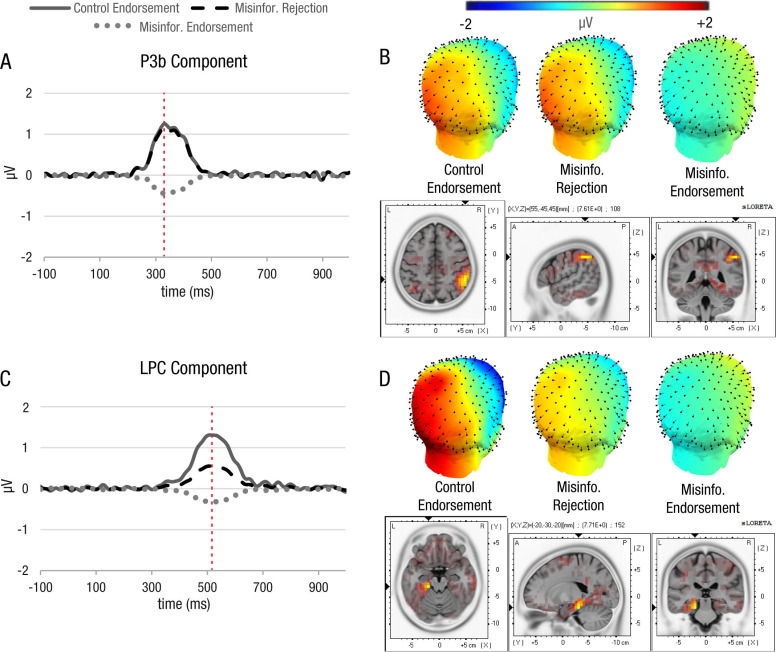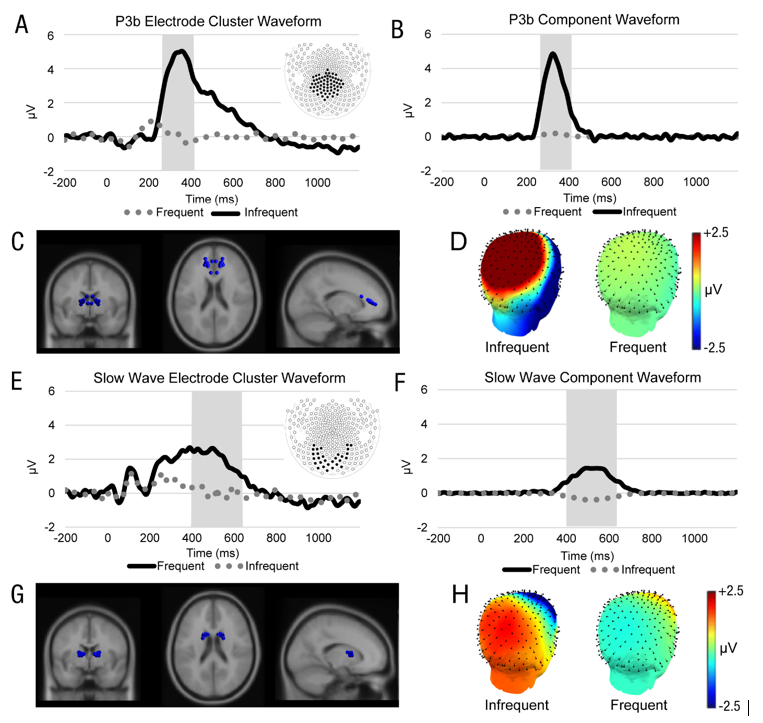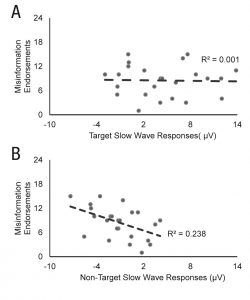The choices we make and experiences we have ultimately end up stored in memory. When retrieved, we have to infer whether a particular memory is true or if it changed over time. In theory, this can be a long and effortful process but in practicality, most of these decisions are made fairly rapidly. When you think about what you ate yesterday for instance, few would spend hours in contemplation before deciding their recollections were true. Nonetheless, research has shown that many of our recollections are biased—painting a rosier picture of reality—or outright false. Such distortions have been shown to have considerable psychological (Bernstein & Loftus, 2009), legal (Loftus, 2003) and even political consequences (Frenda et al., 2013).
While I maintain a keen interest in research in this area, this line of work is a little removed from my current research focus. The main reason is that high-reliability measures of true false event memories (outside of DRM-related phenomena which are fairly distinct from episodic false event memories) are virtually impossible to generate. Nonetheless, I’m proud of the success Bob and I achieved over the years we spent banging our heads on the wall to isolate individual difference factors predictive of false memories.
ATTENTION AND FALSE MEMORY
Applying new techniques to well-established paradigms, while challenging, has lots of potential with regards to making valuable contributions to a field. To that end, I developed an EEG-friendly version of the well-established misinformation effect paradigm drawing on the materials of Okado & Stark (2005) and conducted an exploratory investigation with a college student sample, utilizing a 24-hour delay between event + misinformation exposure and test. My findings in this area (published in the Neurobiology of Learning and Memory) showed the neural signature of true memories to display evidence of increased levels of attentional and recollective activity relative to false memories, demonstrating a possible mechanism for distinguishing between true and false event memories (at least on a relative ranking scale) within a reasonable period of intervening time.

We then extended this line of research to look at the relationship between false memory susceptibility and basic attentional responses as indexed on a classic oddball paradigm. In other words, do individual differences in basic attentional responding on the oddball paradigm predict individual differences in susceptibility to false memory formation on the misinformation effect. To test this, we administered a classic 2-stimulus oddball task along with the misinformation effect paradigm to a group of 24 subjects. We then extracted two attention-related components from the oddball task, the P3b and the classic slow wave response which we broadly adopted as indexes of salient target responding and task-level sustained attention respectively.

The results of this analysis showed that the slow wave response to non-targets proved to be a significant predictor of false perceptual memory reports on the misinformation effect paradigm. Drawing on an interpretation of the classic slow wave as being reflective of sustained attention, these findings are in line with prior behavioral work linking individual differences in task-level attention with false memory susceptibility on the misinformation effect paradigm. We found these results to be intriguing as they raise many interesting questions regarding the link between attention and false memory susceptibility.

Relevant Publications\Posters
Kiat, J.E., Belli, R.F. (2018). The role of individual differences in visual\verbal information processing preferences in visual\verbal source monitoring. Journal of Cognitive Psychology. Advance online publication.
Kiat, J.E., Long, D., Belli, R.F. (2018). Attentional Responses on the Auditory Oddball predict False Memory Susceptibility. Cognitive, Affective, & Behavioral Neuroscience, 18(5), 1000-1014
Kiat, J.E., Belli, R.F. A High-Density EEG Investigation of Misinformation Effect : Differentiating between True and False Perceptual Episodic Memories. 141, 199-208.
Kiat, J.E., Belli, R.F. (2015, November). A High-Density EEG investigation of the Misinformation Effect: Differentiating between True and False Memories. Poster presented at the Psychonomic Society Annual Scientific Meeting, Chicago, IL. Poster Link
Kiat, J.E., Belli, R.F. Neural Activity during Event Encoding and Subsequent False Memory Formation Susceptibility. (in preparation)